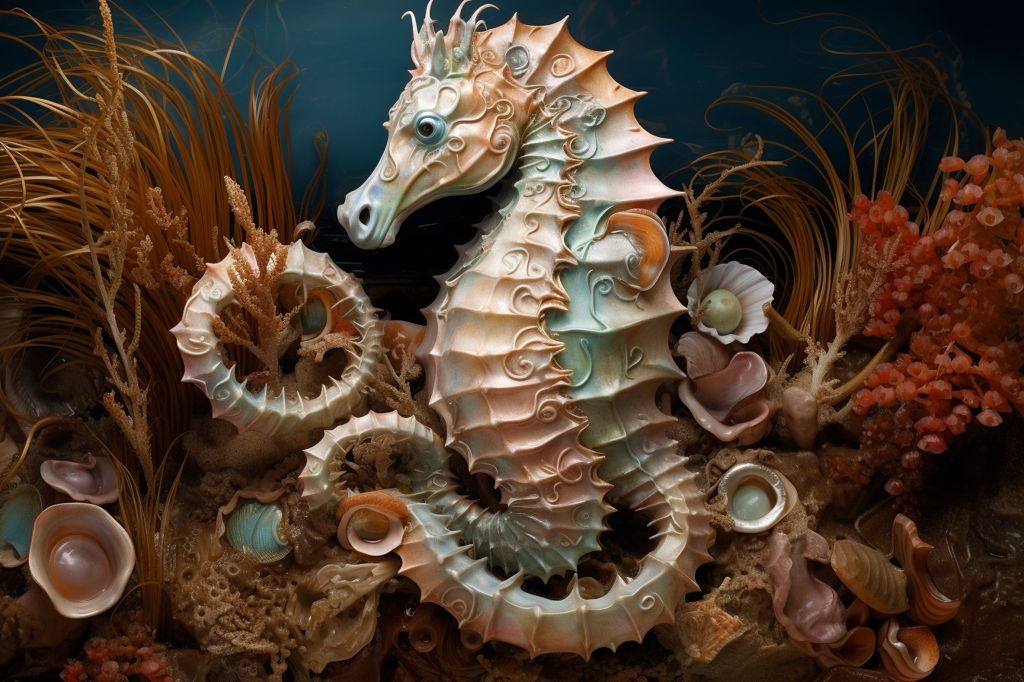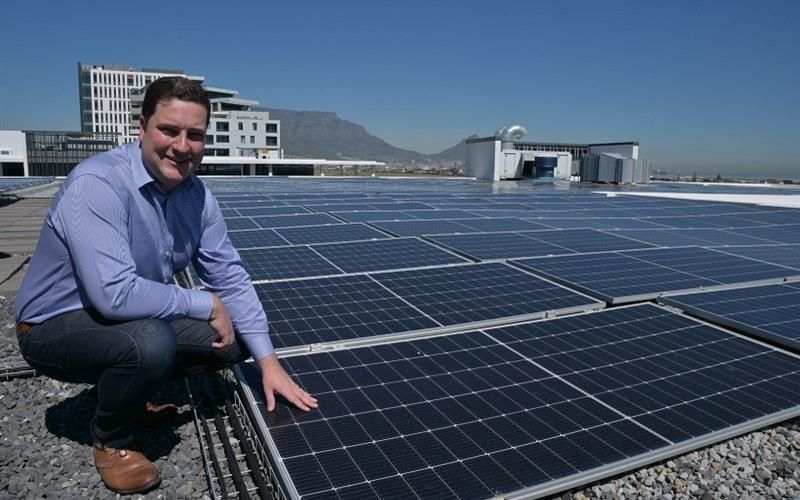Unusually heavy rainfall and flooding on South Africa’s coastline have caused marine life, including abalone and seahorses, to be washed ashore. Slow-moving invertebrates such as abalone and mollusks are particularly affected and cannot escape the changed environment created by the floodwaters mixing with seawater. The Department of Forestry, Fisheries, and the Environment (DFFE) is taking action to reduce the damage, including coordinating efforts to rehabilitate the endangered Knysna seahorse, which is only found in three estuaries in the affected region. The unexpected consequences highlight the need for collective action to address the broader challenges of climate change and protect the planet’s ecosystems.
An Unforeseen Phenomenon on South Africa’s Shores
Unpredictable environmental events have become more frequent due to climate change and irregular weather patterns. A notable example is currently taking place on South Africa’s coastline, where unusually high rainfall and flooding have washed numerous marine life species ashore, including abalone and seahorses. This alarming situation has prompted the Department of Forestry, Fisheries, and the Environment (DFFE) to take action by tackling concerns and coordinating efforts to lessen the damage.
The coastal regions of Uilkraalsmond and Buffeljagsbaai (Gans Baai) in South Africa have experienced a strange sight in the past day: large quantities of abalone, alikreukel, and other shellfish stranded on the coast. This unexpected event can be attributed to the exceptionally heavy rainfall and resulting flooding in the region.
As fresh floodwaters mix with the salty seawater near the shore, the natural habitat of marine creatures is disrupted. While some species like fish and rock lobsters can swim or walk away from these changed environments, slow-moving (sessile) invertebrates such as abalone and mollusks become physiologically stressed and cannot escape.
Marine Life Washouts Beyond One Region
This occurrence is not limited to just one part of the country. The Garden Route, another region in South Africa, has seen a significant number of seahorses wash ashore, specifically at Lookout Beach. Similarly, heavy rainfall has caused the Keurbooms and Bitou rivers to overflow, bringing seagrass with seahorses onto the beach.
The importance of this event cannot be overstated, especially considering that the Knysna seahorse, native to the Garden Route, is the most endangered seahorse species in the world. It was the first seahorse to be classified as Endangered on the IUCN Red List in 2004. The Knysna seahorse is only found in three estuaries in this region, further emphasizing the urgency to address this predicament.
Reacting to these atypical washouts, the DFFE has expressed gratitude to volunteers from Save the Seahorse and Cape Nature who have diligently collected stranded seahorses from the beach for rehabilitation. Such collaborative efforts are essential in reducing the negative impact of these unexpected environmental events on marine life.
Addressing the Broader Challenges of Climate Change
It is crucial to recognize that similar washouts are likely to happen in the coming weeks as the world faces unparalleled environmental challenges. Governments, communities, and individuals must work together, act responsibly, and adapt to new situations. Tackling the effects of climate change and erratic weather patterns, such as heavy rainfall and flooding, will necessitate coordinated efforts to preserve our planet’s rich biodiversity.
The struggle of the Knysna seahorses and other marine organisms highlights the intertwined relationship between nature and human activities. As we aim to lessen the impact of heavy rainfall and flooding on marine life, we must acknowledge our collective responsibility in addressing the broader challenges of climate change and environmental degradation.
Confronting these ecological challenges, it is increasingly vital for scientists, environmentalists, and policymakers to collaborate in understanding the complex interactions between natural and human-induced factors. In doing so, we can create more effective strategies to address these problems and protect the future of our planet’s diverse and interconnected ecosystems.
As we steer through the uncertain waters of our shifting environment, the story of marine life affected by heavy rainfall and flooding in South Africa resonates with everyone. While these events may appear isolated, they are part of a larger narrative that reminds us that the duty to protect and preserve our environment lies with each of us. By adopting a proactive and collective approach, we can ensure the future of our planet’s natural resources and the countless species that inhabit it.
1. What caused the marine life washouts on South Africa’s coastline?
Unusually heavy rainfall and flooding caused the marine life washouts on South Africa’s coastline.
2. Which marine life species were affected by the washouts?
Abalone and seahorses are among the marine life species affected by the washouts.
3. Why can’t slow-moving invertebrates like abalone and mollusks escape the changed environment created by floodwaters mixing with seawater?
Slow-moving invertebrates like abalone and mollusks become physiologically stressed and cannot escape.
4. Which region in South Africa experienced the marine life washouts?
The coastal regions of Uilkraalsmond and Buffeljagsbaai (Gans Baai) in South Africa experienced the marine life washouts.
5. Which endangered seahorse species was affected by the washouts?
The Knysna seahorse, which is the most endangered seahorse species in the world, was affected by the washouts.
6. How is the Department of Forestry, Fisheries, and the Environment (DFFE) taking action to reduce the damage caused by the washouts?
The DFFE is coordinating efforts to rehabilitate the Knysna seahorse and expressing gratitude to volunteers who have collected stranded seahorses from the beach for rehabilitation.
7. Why is it crucial to address the broader challenges of climate change?
It is crucial to address the broader challenges of climate change because heavy rainfall and flooding are likely to happen in the coming weeks as a result of climate change and erratic weather patterns.
8. What can individuals do to help protect the environment and preserve marine life?
Individuals can adopt a proactive and collective approach to protecting the environment and preserving marine life. This includes acting responsibly and adapting to new situations, as well as collaborating with scientists, environmentalists, and policymakers to create effective strategies to address ecological challenges.








